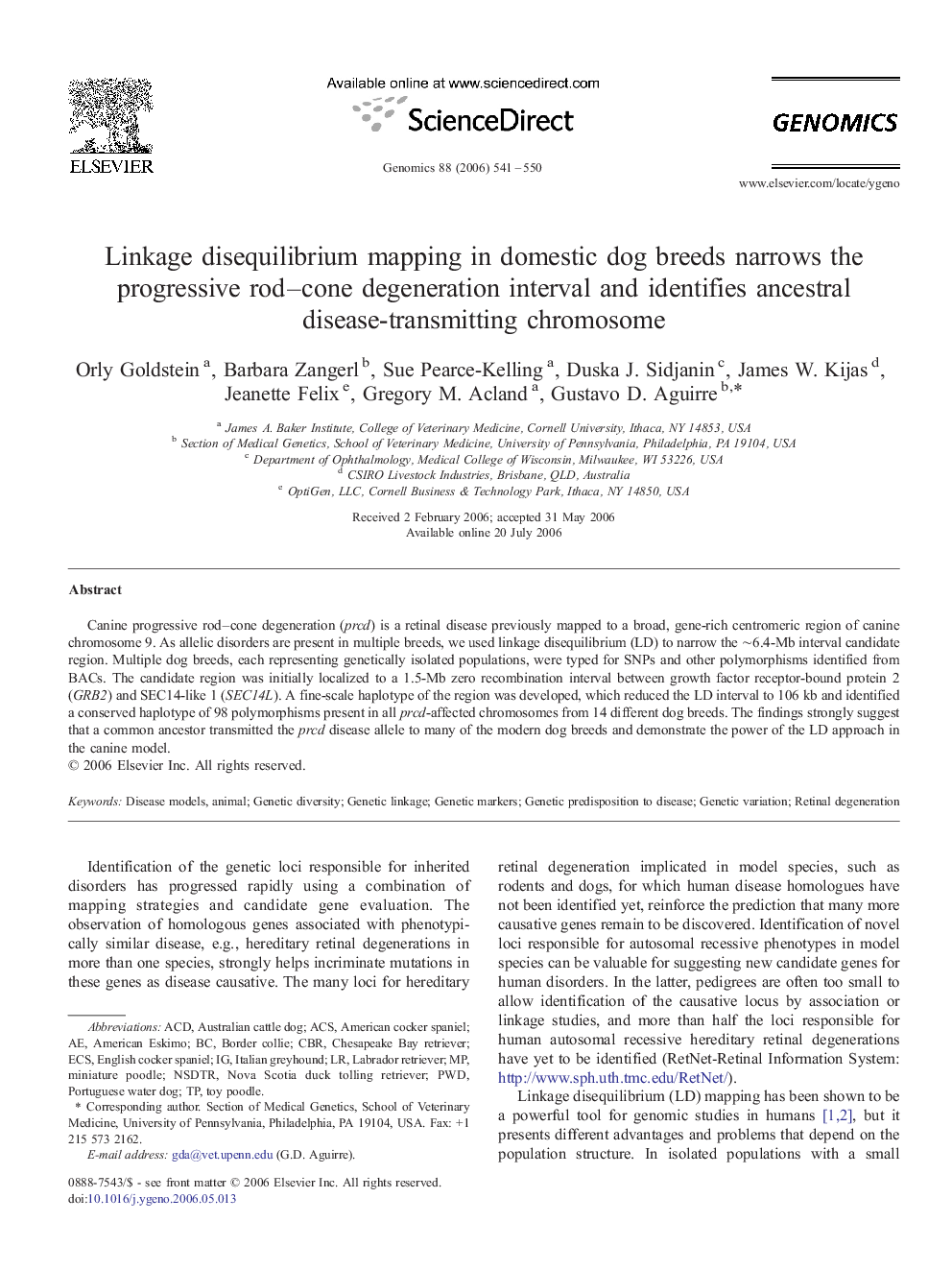| Article ID | Journal | Published Year | Pages | File Type |
|---|---|---|---|---|
| 5907982 | Genomics | 2006 | 10 Pages |
Canine progressive rod-cone degeneration (prcd) is a retinal disease previously mapped to a broad, gene-rich centromeric region of canine chromosome 9. As allelic disorders are present in multiple breeds, we used linkage disequilibrium (LD) to narrow the â¼6.4-Mb interval candidate region. Multiple dog breeds, each representing genetically isolated populations, were typed for SNPs and other polymorphisms identified from BACs. The candidate region was initially localized to a 1.5-Mb zero recombination interval between growth factor receptor-bound protein 2 (GRB2) and SEC14-like 1 (SEC14L). A fine-scale haplotype of the region was developed, which reduced the LD interval to 106Â kb and identified a conserved haplotype of 98 polymorphisms present in all prcd-affected chromosomes from 14 different dog breeds. The findings strongly suggest that a common ancestor transmitted the prcd disease allele to many of the modern dog breeds and demonstrate the power of the LD approach in the canine model.
